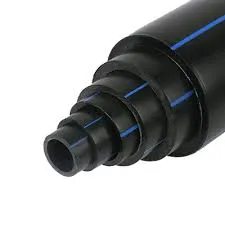sep . 06, 2024 03:44 Back to list
Efficient Drip Irrigation Using PVC Pipe for Sustainable Gardening
Drip irrigation is an efficient and innovative method of watering plants that has gained popularity among farmers and gardeners alike. One economical and effective way to set up a drip irrigation system is by using PVC pipes. PVC, or polyvinyl chloride, is a durable and lightweight material that can withstand various weather conditions, making it an excellent choice for outdoor irrigation projects.
.
To start a drip irrigation system with PVC pipes, the first step is to gather the necessary materials. You will need PVC pipes of various diameters, PVC fittings, a water source, a filter to prevent clogging, and emitters or soaker hoses that will distribute the water to your plants. The size of your PVC pipes will depend on the scale of your irrigation system and the number of plants you intend to water.
drip irrigation from pvc pipe

Once you have your materials, the next step is to design your system. Measure the area where you will be installing the irrigation and plan the layout of the PVC pipes accordingly. Cut the pipes to the desired lengths, and then use PVC cement to assemble the fittings. Be sure to include a main line that connects to your water source and branch lines that lead to each plant.
After the system is assembled, install emitters at intervals along the pipes to ensure even water distribution. Depending on your plants' water needs, you can adjust the emitter flow rates for optimal irrigation. Once everything is set up, connect your system to the water source, turn it on, and observe how effectively water is delivered to your plants.
PVC pipe drip irrigation systems are not only efficient and cost-effective but also relatively easy to maintain. Regularly check for clogs in the emitters and clean your filter to ensure smooth operation. With proper care, a PVC-based drip irrigation system can provide your plants with the moisture they need to thrive while conserving water resources, making it a sustainable choice for watering gardens and crops alike.
-
Premium PP Welding Rod: GPT-4 Turbo Enhanced
NewsAug.01,2025
-
HDPE Drainage & Irrigation Pipe - Durable, Efficient Solutions
NewsAug.01,2025
-
Premium PVC Transparent Pipe: Durable & Clear Solutions
NewsJul.31,2025
-
High-Quality UPVC Electrical Pipe for Safe Wiring Solutions
NewsJul.30,2025
-
Premium PVC Pipe Fitting Supplier – Durable & Leak-Proof Solutions
NewsJul.30,2025
-
High-Gloss PVC Rigid Sheet for Durable & Smooth Surfaces | Wholesale Supply
NewsJul.29,2025

